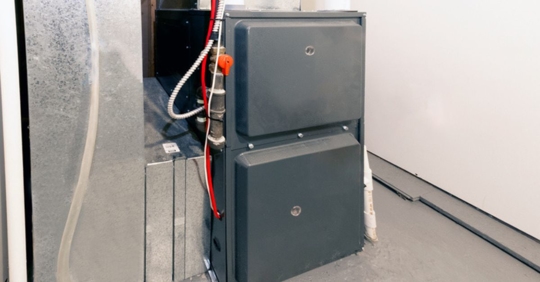As the temperatures drop in Northern Virginia, your furnace becomes the heart of your home’s comfort. Just like you schedule a health checkup to catch potential problems early, your heating system needs regular safety inspections to prevent costly repairs, dangerous hazards, and unexpected breakdowns. At Hoffman Cooling & Heating, we know that a small problem left unchecked can escalate quickly, which is why annual furnace safety checks are essential for every homeowner. In this guide, we’ll explain why these inspections matter, what they include, and how to make sure your system is ready for the season.
Why Furnace Safety Checks Matter
Furnaces are complex systems that combine gas, electricity, and moving mechanical parts—all operating under high heat. Without proper maintenance, small issues like a cracked heat exchanger or loose gas connection can create serious risks. Carbon monoxide leaks, for example, are virtually undetectable without professional equipment, and exposure can be deadly. According to the CDC, hundreds of Americans die each year from accidental carbon monoxide poisoning, often linked to poorly maintained heating systems.
Beyond safety, neglected furnaces also become less efficient over time. Dust buildup, clogged filters, and worn components force the system to work harder to heat your home. This not only drives up energy costs but can also shorten your furnace’s lifespan. Regular professional inspections allow technicians to catch these issues early, ensuring your system operates efficiently, keeps your energy bills down, and lasts for many winters to come.
What’s Included in a Professional Safety Check
A comprehensive furnace safety inspection goes far beyond what most homeowners can manage on their own. At Hoffman Cooling & Heating, our technicians thoroughly evaluate each critical component:
- Thermocouples to regulate the gas valve and prevent leaks.
- Heat exchangers to safely transfer heat without releasing dangerous gases into your home.
- Gas connections to ensure secure, leak-free operation.
- Airflow and filters to reduce strain and improve efficiency.
Technicians also use advanced diagnostic tools, including combustion analyzers and carbon monoxide detectors, to detect subtle problems before they become emergencies. This meticulous approach not only protects your family but also improves the performance and longevity of your furnace.
When to Schedule a Furnace Safety Check
Timing is everything. The best moment for a professional inspection is early fall, before your heating season begins. Waiting until winter can be risky; a sudden breakdown during freezing temperatures is inconvenient, costly, and potentially dangerous. Older furnaces, high-usage systems, or homes with children or elderly residents may benefit from even more frequent checks. By scheduling inspections proactively, homeowners can avoid emergency service calls, prevent safety hazards, and enjoy uninterrupted warmth throughout the cold months.
Simple Safety Checks Homeowners Can Perform
While professional inspections are essential, homeowners can still play a role in monitoring their furnace’s health. Checking the air filter monthly, for example, can prevent airflow restrictions that reduce efficiency and stress the system. Look for obvious signs of wear or corrosion on visible components, and ensure the area around your furnace is clean and unobstructed. These small steps can help identify problems early, giving you more time to call in a professional before minor issues escalate.
Choosing the Right HVAC Technician
A furnace is only as safe and efficient as the professional who inspects it. When choosing a technician, consider:
- Certifications and licensing, such as NATE certification, which indicates advanced training and expertise.
- Experience with similar systems to ensure they understand the nuances of your furnace model.
- Customer reviews and testimonials to gauge reliability and service quality.
- Warranties and guarantees for the work performed.
At Hoffman Cooling & Heating, our certified technicians combine knowledge, skill, and a commitment to Northern Virginia homeowners, ensuring your furnace is thoroughly inspected and operating safely.
The Benefits of Regular Maintenance
Routine furnace safety checks are about more than just preventing disasters—they also save money and increase comfort. A well-maintained furnace can reduce energy bills by up to 30%, improve indoor air quality, and prevent unexpected breakdowns. Additionally, catching small issues early reduces the likelihood of costly repairs, helping your furnace reach its full expected lifespan, often 15-20 years or more. These inspections are an investment in both safety and long-term savings, giving homeowners peace of mind when the cold weather hits.
Schedule Your Furnace Safety Check Today
Don’t wait until the first cold snap to discover a problem. Protect your home, energy bills, and family’s safety by scheduling a furnace safety check with Hoffman Cooling & Heating. Our experienced technicians provide thorough inspections, expert maintenance, and guidance tailored to your home. Ensure your furnace is ready for winter and enjoy reliable, efficient heating all season long.
Call Hoffman Cooling & Heating now at (612) 255-5883 or contact us online.

